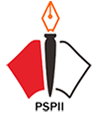PENGEMBANGAN MODEL PEMBELAJARAN SINEKTIK DI MADRASAH IBTIDAIYAH
DOI:
https://doi.org/10.15575/jpi.v28i2.546Keywords:
Synectic, Social Sciences, Madrasah Ibtidaiyah.Abstract
The purpose of this study is to produce synectic learning model in order to develop students' creative thinking skills in teaching Social Studies in the Madrasah Ibtidaiyah. This research was conducted using research and development approach. Validation testing was performed in five madrasas of which the qualification are considered good, moderate and less. This study was developed by doing experiments and comparing between Synectic Learning Model (KE) and Conventional Model KK). Validation test results indicated that students' ability to think creatively was different between the test results of the experimental group (α ≤ .0001) and the control group (α ≤ .0001). The result of this study concluded that: 1) Synectic Learning Model is the learning model proposed by Gordonsynectic. The development and modifications were made based on the condition and capability of students in the l Environtment of Elementary Madrasah; 2) The Implementation of synectic learning model can improve learning conditions on the subjects of Social Studies in Elementary Madrasah; 3) synectic learning model is effective to enhance creative thinking skills and student learning outcomes on the subjects of Social Sciences, as well as improving teacher performance.
References
Al Muchtar, S. 2000. Epistemologi Pendidikan Ilmu Pengetahuan Sosial. Bandung: Gelar Pustaka Mandiri.
Beauchamp, G.A. 1975. Curriculum Theory. Wilmette, Illinois: The Kagg Press.
Bennett, G. K., Sheasore, H. G., Wesman, A. G. 1982. Differential Aptitude Tests: Administrator’s Handbook. New York: The Psychological Corporation.
Bloomberg, M. 1973. Creativity: Theory and Research. New haven, Conn: College and University Press.
Borg, W.R. & Gall, M.D. 1983. Educational Research: An Introduction. New York: Longman.
Depdiknas. 2003. Kurikulum Pendidikan Dasar 2003: Landasan, Program, dan Pengembangan. Jakarta: Depdiknas.
Fullan, M. 1982. The Meaning of Educational Change. New York: Teacher College Press.
Gani, R. 1988. Pengajaran Sastra Indonesia Respons dan Analisis. Padang: IKIP Padang.
Gordon, J.J. William., & Bruch, N. 1974. TET (Teacher Effectiveness Training). New York: David McKay Co, Inc
Gordon, J.J. William. 1980. Synectics Model. New York: Longman Publishers.
Guilford, J. P. 1968. Intelligence, Creativity and Their Educational Implication. San Diego, Calif: R. R. Knapp.
Hamalik, O. 1992. Studi Ilmu Pengetahuan Sosial. Bandung: Mandar Maju.
Hasan, S. H. 1993. “Tujuan Kurikulum Ilmu Pengetahuan Sosialâ€. Jurnal Pendidikan Ilmu Pengetahuan Sosial. Nomor Perdana 92-101.
Hersch, C. 1973. The Cognitive Functioning of the Creative Person. New haven, Conn: College and University Press.
Hunter, M. 1971. The Teaching Process. Dalam The Teacher’s Handbook. Glenview-Illinois: Scot, Foresman & Co.
Jarolimek, J. 1982. Social Studies in Elementary Education. New York: MacMillan Publishing Co. Inc.
Joyce, B. dan Weil, M. 1992. Models of Teaching. (Fourth Edition). Needham Heights Massachusetts: Allyn & Bacon.
Joyce, B. dan Weil, M. 2000. Models of Teaching. Boston: A Pearson education Company.
Klein, M. F. 1989. Curriculum Reform in the Elementary School. New York & London: Teachers College Press.
Knirk, F.G. & Gustafson, K.L. 1986. Instructional Technology, A Systematic Approach to Education. New York: Holt, Rinehart and Winston
Marsh, C. & Stafford, K. 1988. Curriculum Practices. Sydney: Mc Graw-Hill Book Company.
Martorella, P.H. 1994. Social Studies for Elementary School Children: Developing Young Citizens. New York: MacMillan College Publishing Company.
Miller, J.P. dan Seller, W. 1985. Curriculum Perspective and Practice. New York: Longman.
Nur, A.M. 2008. Kreativitas Verbal. Online. Tersedia. http://www.nur.w0472nd.blogspot.com/2008/12/kreativitas-verbal.html 2 Januari 2009.
Pondok Bahasa. 2008. Penerapan Model Sinektik dalam Meningkatkan Kreativitas Menulis. Online. Tersedia:
http://pondokbahasa.wordpress.com/2008/12/15/penerapan-model-
sinektik- dalam-meningkatkan-kreativitas-menulis 15 Desember 2008.
Savage, V.T. dan Amstrong, G.D. 1996. Effective Teaching in Elementary Social Studies. (Third Edition). Englewood Cliffs, New Jersey: Prentice-Hall Inc.
Schubert, W. H. 1986. Curriculum Perspective, Paradigm, and Possibility. New York: MacMillan Publishing Company.
Soemantri, N. 2001. Menggagas Pembaharuan Pendidikan IPS. Bandung: PT. Remaja Rosdakarya.
Starko, J.A. 1995. Creativity in the Classroom: Schools of Curious Delight. New York: Longman Publishers.
Sukmadinata, N.S. 1988. Prinsip dan Landasan Pengembangan Kurikulum. Jakarta: P2LPTK Ditjen Dikti Depdiknas.
Sumaatmadja, N. 1980. Manusia dalam Konteks Sosial Budaya dan Lingkungan Hidup. Bandung: Alfabeta.
Sumaatmadja, N. 1984. Metodologi Pengajaran IPS. Bandung: Alumni.
Syafruddin. 2001. Penerapan Model ATI dalam Pembelajaran IPS di SD. Disertasi Doktor pada SPS UPI Bandung: tidak diterbitkan.
Tanner, D., & Tanner, L.N. 1980. Curriculum Development: Theory Into Practice. New York: MacMillan Publishing, Co. Inc.
Downloads
Published
Issue
Section
Citation Check
License
Authors who publish with this journal agree to the following terms:
- Authors retain copyright and grant the journal right of first publication with the work simultaneously licensed under a Attribution-ShareAlike 4.0 International (CC BY-SA 4.0) License that allows others to share the work with an acknowledgment of the work's authorship and initial publication in this journal.
- Authors are able to enter into separate, additional contractual arrangements for the non-exclusive distribution of the journal's published version of the work (e.g., post it to an institutional repository or publish it in a book), with an acknowledgment of its initial publication in this journal.
- Authors are permitted and encouraged to post their work online (e.g., in institutional repositories or on their website) prior to and during the submission process, as it can lead to productive exchanges, as well as earlier and greater citation of published work (See The Effect of Open Access).






